- Importance of Cost-Effective Lighting Solutions for Seedlings
- Energy Efficiency
- Longevity
- Light Spectrum
- Uniform Light Distribution
- Affordability
- Benefits of Fluorescent Lamps for Seedling Growth
- Understanding the Science Behind Fluorescent Lighting
- How does fluorescent lighting work?
- Advantages of fluorescent lighting
- Considerations for seedling lighting
- Choosing the Right Fluorescent Lamp for Seedlings
- 1. Light Spectrum:
- 2. Lumens:
- 3. Color Rendering Index (CRI):
- 4. Energy Efficiency:
- 5. Lamp Size and Shape:
- 6. Longevity and Reliability:
- Proper Placement and Setup of Fluorescent Lamps for Seedlings
- 1. Distance from the seedlings
- 2. Hanging or mounting
- 3. Light distribution
- 4. Light duration
- 5. Light intensity
- 6. Reflective surfaces
- Monitoring and Adjusting Lighting Conditions for Optimal Growth
- 1. Light Intensity
- 2. Light Duration
- 3. Light Spectrum
- 4. Light Distribution
- 5. Regular Monitoring
- Cost Savings and Sustainability with Fluorescent Lamps
- 1. Energy Efficiency
- 2. Long Lifespan
- 3. Low Heat Output
- 4. Versatility
- 5. Environmental Benefits
- Conclusion
- Tips for Maximizing the Efficiency of Fluorescent Lighting for Seedlings
- 1. Choose the right type of fluorescent lamps
- 2. Position the lights correctly
- 3. Use a timer
- 4. Provide sufficient light duration
- 5. Maintain proper distance and coverage
- 6. Keep the lights clean
- 7. Consider using reflective surfaces
- 8. Monitor the temperature
- 9. Rotate the seedlings
- 10. Monitor growth and adjust lighting as needed
- “Question-Answer”
- What are fluorescent lamps?
- Why are fluorescent lamps cost-effective for seedlings?
- What type of fluorescent lamps are suitable for seedlings?
- How far should fluorescent lamps be placed from seedlings?
- Can fluorescent lamps be used as the sole light source for seedlings?
- How long should fluorescent lamps be kept on for seedlings?
- Are there any drawbacks to using fluorescent lamps for seedlings?
- “Video” How to Grow Plants using CFL and Florescent Lights – Growing Indoors Cheap, Easy and Effective
When it comes to growing seedlings, ensuring proper lighting is crucial for their healthy and vigorous growth. While natural sunlight is the best source of light for plants, it may not always be available or sufficient, especially in areas with limited sunlight or during winter months. In such cases, fluorescent lamps offer a cost-effective and efficient solution for providing the necessary light for seedling growth.
Fluorescent lamps have long been used in indoor gardening due to their ability to emit light in a wide spectrum that plants can utilize for photosynthesis. Unlike traditional incandescent bulbs, fluorescent lamps produce less heat, making them safer and more energy-efficient. Additionally, fluorescent lamps have a longer lifespan, reducing the need for frequent replacements.
One of the key benefits of using fluorescent lamps for seedling growth is their adjustable light output. By varying the distance between the lamps and the seedlings, gardeners can control the intensity of the light provided. This flexibility allows for better customization of lighting conditions based on the specific needs of different seedlings, ensuring optimal growth rates and reducing the risk of issues such as stretching or stunting.
In addition to their adjustable light output, fluorescent lamps also offer a good balance of both blue and red light, which are essential for different stages of seedling growth. Blue light promotes the development of strong, compact seedlings, while red light stimulates flowering and fruiting. By using fluorescent lamps with a balanced spectrum, gardeners can provide seedlings with the light they need at every stage of their growth, resulting in healthier and more productive plants.
Overall, fluorescent lamps provide a cost-effective lighting solution for seedlings, offering adjustable light output, a balanced spectrum, and energy efficiency. By harnessing the power of fluorescent lamps, gardeners can ensure the healthy growth of seedlings and maximize their chances of success in the garden.
Importance of Cost-Effective Lighting Solutions for Seedlings
Growing seedlings can be a delicate process that requires careful attention to their environmental conditions, including adequate lighting. Artificial lighting solutions are often necessary to provide seedlings with the necessary amount and quality of light, especially in situations where natural sunlight is limited or unreliable.
When it comes to lighting seedlings, cost-effectiveness is an important factor to consider. Utilizing cost-effective lighting solutions not only helps to minimize expenses but also ensures that seedlings receive the optimal amount of light for their growth and development.
Energy Efficiency
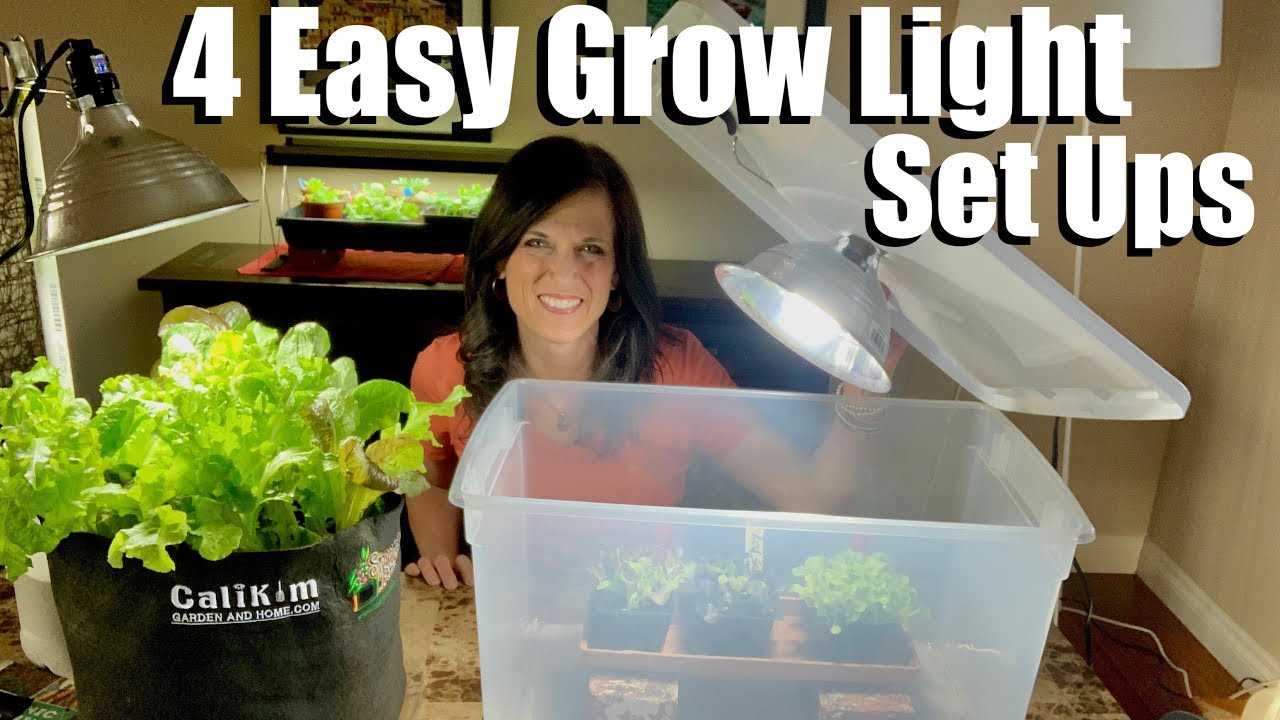
Cost-effective lighting solutions for seedlings should prioritize energy efficiency. Fluorescent lamps are a popular choice for their ability to produce high-quality light while consuming minimal energy. Compared to other lighting options, such as incandescent bulbs or high-intensity discharge (HID) lamps, fluorescent lamps are more energy-efficient, resulting in lower electricity costs.
Longevity
The longevity of lighting solutions is another essential aspect of cost-effectiveness. Seedlings require consistent and prolonged exposure to light to thrive, so using lamps that have a long lifespan helps to reduce the frequency of replacements and associated costs. Fluorescent lamps are known for their durability, often lasting up to ten times longer than incandescent bulbs, making them a cost-effective choice for lighting seedlings.
Light Spectrum
Seedlings have specific light spectrum requirements throughout different stages of growth. Choosing lighting solutions that can provide the necessary spectrum ensures healthy growth and development. Fluorescent lamps come in various spectrums, including cool white, warm white, and full spectrum. This versatility allows growers to select the appropriate lighting for seedlings at different growth stages without the need for multiple light sources.
Uniform Light Distribution
Uniform light distribution is crucial for ensuring all seedlings receive equal light exposure, preventing uneven growth and potential damage. Fluorescent lamps offer a wide beam angle, allowing for better light distribution and coverage. This feature ensures that all seedlings receive consistent and balanced light, promoting uniform growth.
Affordability
Cost-effective lighting solutions need to be affordable and easily accessible for growers. Fluorescent lamps are widely available and come at a reasonable cost, making them an affordable option for both small-scale and large-scale seedling operations. Additionally, their accessibility ensures that replacement lamps can be easily obtained whenever necessary.
| Benefits | Cost-Efficient Lighting Solutions for Seedlings |
|---|---|
| Energy Efficiency | Fluorescent lamps |
| Longevity | Fluorescent lamps |
| Light Spectrum | Fluorescent lamps |
| Uniform Light Distribution | Fluorescent lamps |
| Affordability | Fluorescent lamps |
In conclusion, cost-effective lighting solutions are of utmost importance in ensuring the successful growth and development of seedlings. Fluorescent lamps stand out as an ideal choice due to their energy efficiency, longevity, ability to provide the necessary light spectrum, uniform light distribution, and affordability. By harnessing the power of fluorescent lamps, growers can create a cost-effective and optimized lighting environment for their seedlings.
Benefits of Fluorescent Lamps for Seedling Growth
- Cost-effective: Fluorescent lamps are an affordable lighting solution for seedlings. They are readily available and usually come at a lower cost compared to other types of grow lights.
- Energy-efficient: Fluorescent lamps consume less energy compared to traditional incandescent bulbs, making them an environmentally friendly choice. This energy efficiency translates to cost savings on electricity bills.
- Cooler temperatures: Fluorescent lamps produce minimal heat, reducing the risk of overheating the seedlings. This is especially important during the early stages of growth when seedlings are sensitive to high temperatures.
- Wide light spectrum: Fluorescent lamps emit a broad spectrum of light that is suitable for seedling growth. This spectrum includes both cool and warm light, which helps promote healthy seedling development and prevents leggy growth.
- Adjustable height: Fluorescent lamps are often designed with adjustable height options, allowing growers to easily control the distance between the light source and the seedlings. This adjustability ensures that the seedlings receive the optimal amount of light for their growth stage.
In conclusion, fluorescent lamps offer several benefits for seedling growth, including cost-effectiveness, energy efficiency, cooler temperatures, a wide light spectrum, and adjustable height. These advantages make fluorescent lamps an excellent choice for growers looking for a cost-effective and efficient lighting solution for their seedlings.
Understanding the Science Behind Fluorescent Lighting
Fluorescent lighting has revolutionized the way we illuminate our homes, offices, and various indoor spaces. Understanding the science behind this technology can help us better appreciate its benefits and how it can be used for cost-effective lighting solutions for seedlings.
How does fluorescent lighting work?
Fluorescent lamps work on the principle of fluorescence, where an electric current is passed through a tube filled with low-pressure mercury vapor and a noble gas such as argon or xenon. The electric current excites the mercury atoms, causing them to emit ultraviolet (UV) light.
The inside surface of the fluorescent tube is coated with phosphor, which absorbs the UV light and then re-emits it as visible light. Different types of phosphors can produce different colors of light, allowing for a wide range of lighting options.
Advantages of fluorescent lighting
- Energy efficiency: Fluorescent lamps are known for their energy efficiency. They produce more light and less heat compared to traditional incandescent bulbs, making them a cost-effective lighting solution.
- Long lifespan: Fluorescent lamps have a longer lifespan compared to incandescent bulbs. This means lower replacement costs and less environmental impact.
- Versatility: Fluorescent lamps can be manufactured in various shapes and sizes, making them suitable for different lighting applications. This includes grow lights for seedlings, where specific light spectra can be used to optimize plant growth.
- Cool temperature: Fluorescent lamps emit less heat compared to incandescent bulbs, making them safer to use and reducing the risk of heat damage to plants or other delicate items.
Considerations for seedling lighting
When using fluorescent lighting for seedlings, it is important to consider the following:
- Light intensity: Seedlings require sufficient light for healthy growth. It is important to choose fluorescent lamps with appropriate brightness levels or use multiple lamps to ensure adequate light coverage.
- Light spectrum: Different light spectra can have varying effects on seedling growth. For example, blue light promotes leaf development, while red light stimulates flowering. Using fluorescent lamps with adjustable spectrums can allow for customized lighting based on the specific needs of the seedlings.
- Light duration: Seedlings require a specific amount of light exposure each day. The recommended duration for seedling lighting is typically around 12 to 16 hours. Using timers or automatic lighting systems can help ensure consistent and adequate lighting for proper seedling development.
By understanding the science behind fluorescent lighting, we can harness its power to create cost-effective lighting solutions for seedlings. Whether it’s a small indoor garden or a large-scale nursery, fluorescent lamps offer a versatile and efficient lighting option for promoting healthy seedling growth.
Choosing the Right Fluorescent Lamp for Seedlings
When it comes to providing cost-effective lighting solutions for seedlings, choosing the right fluorescent lamp is crucial. Here are some key factors to consider:
1. Light Spectrum:
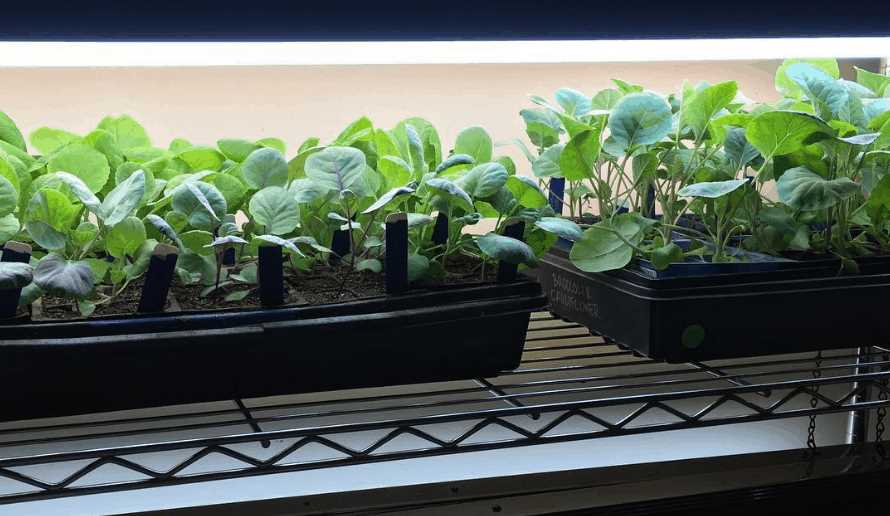
Fluorescent lamps come in different light spectrums, including cool white, warm white, and daylight. For seedlings, it is recommended to use a lamp with a cool white spectrum, which provides a balanced light that promotes healthy growth.
2. Lumens:
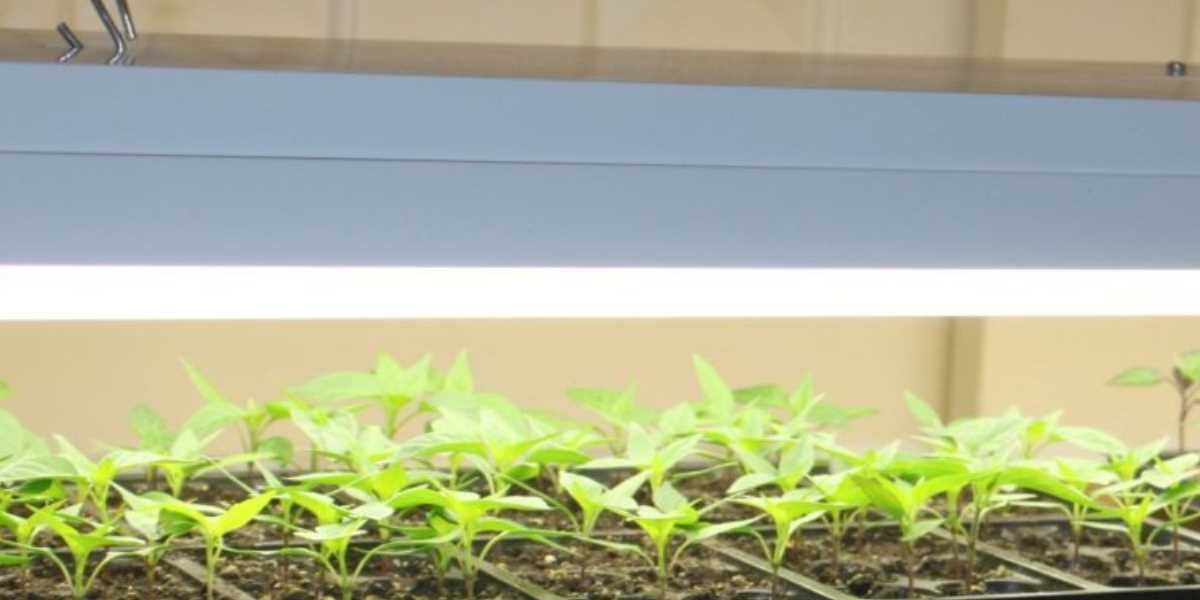
Lumens measure the brightness of a lamp. When selecting a fluorescent lamp for seedlings, ensure that it provides sufficient lumen output to adequately illuminate the plants. Aim for a minimum of 2,000 lumens per square foot.
3. Color Rendering Index (CRI):
The CRI indicates how accurately a lamp can reproduce colors. A higher CRI means that the lamp will provide a more vibrant and natural light. For seedlings, look for a lamp with a CRI of at least 80 to ensure that the plants receive the full spectrum of light they need.
4. Energy Efficiency:
Fluorescent lamps are known for their energy efficiency. Look for lamps with an Energy Star rating or those labeled as energy-efficient to ensure that you are using a lamp that consumes less electricity while still providing ample light for your seedlings.
5. Lamp Size and Shape:
Consider the size and shape of the lamp when choosing one for your seedlings. T8 and T5 fluorescent tubes are commonly used for seedling lighting due to their efficiency and compact size. Compact fluorescent lamps (CFLs) are also an option, especially if you have limited space.
6. Longevity and Reliability:
Choose a fluorescent lamp that has a long lifespan and is reliable. Look for lamps with a high average rated lifespan, such as 20,000 hours or more, to ensure that you won’t have to frequently replace them.
By considering these factors, you can choose the right fluorescent lamp for your seedlings, ensuring optimal growth and cost-effective lighting solutions.
Proper Placement and Setup of Fluorescent Lamps for Seedlings
When it comes to setting up fluorescent lamps for seedlings, proper placement and setup are crucial for their growth and development. Here are some important factors to consider:
1. Distance from the seedlings
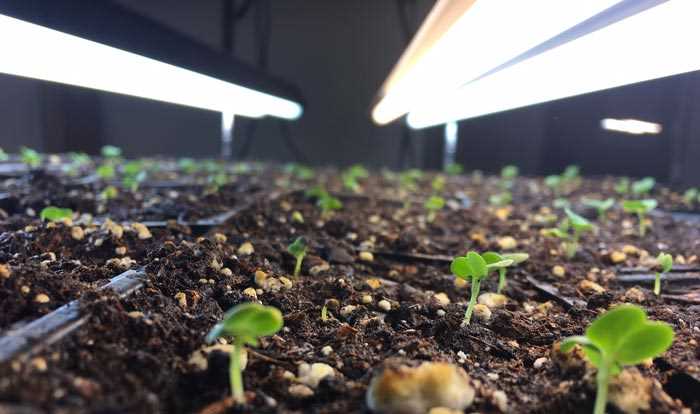
Fluorescent lamps should be positioned fairly close to the seedlings, usually within a few inches. This ensures that the seedlings receive sufficient light intensity for photosynthesis without getting burned. As the seedlings grow, the lamps can be raised accordingly to maintain the ideal distance.
2. Hanging or mounting
Fluorescent lamps can be hung from ceiling fixtures or mounted on a rack above the seedlings. Hanging the lamps allows for easy adjustment of height as the seedlings grow. If mounting the lamps on a rack, make sure it is securely positioned above the seedlings and can be raised or lowered as needed.
3. Light distribution
It’s important to ensure even distribution of light over the seedlings to promote uniform growth. One way to achieve this is by using multiple fluorescent lamps positioned at different angles. This helps to eliminate shadows and provide adequate light to all parts of the seedlings.
4. Light duration
Seedlings typically require around 14-16 hours of light per day to simulate natural daylight and promote healthy growth. Using a timer can help automate the lighting schedule and ensure consistent light exposure for the seedlings.
5. Light intensity
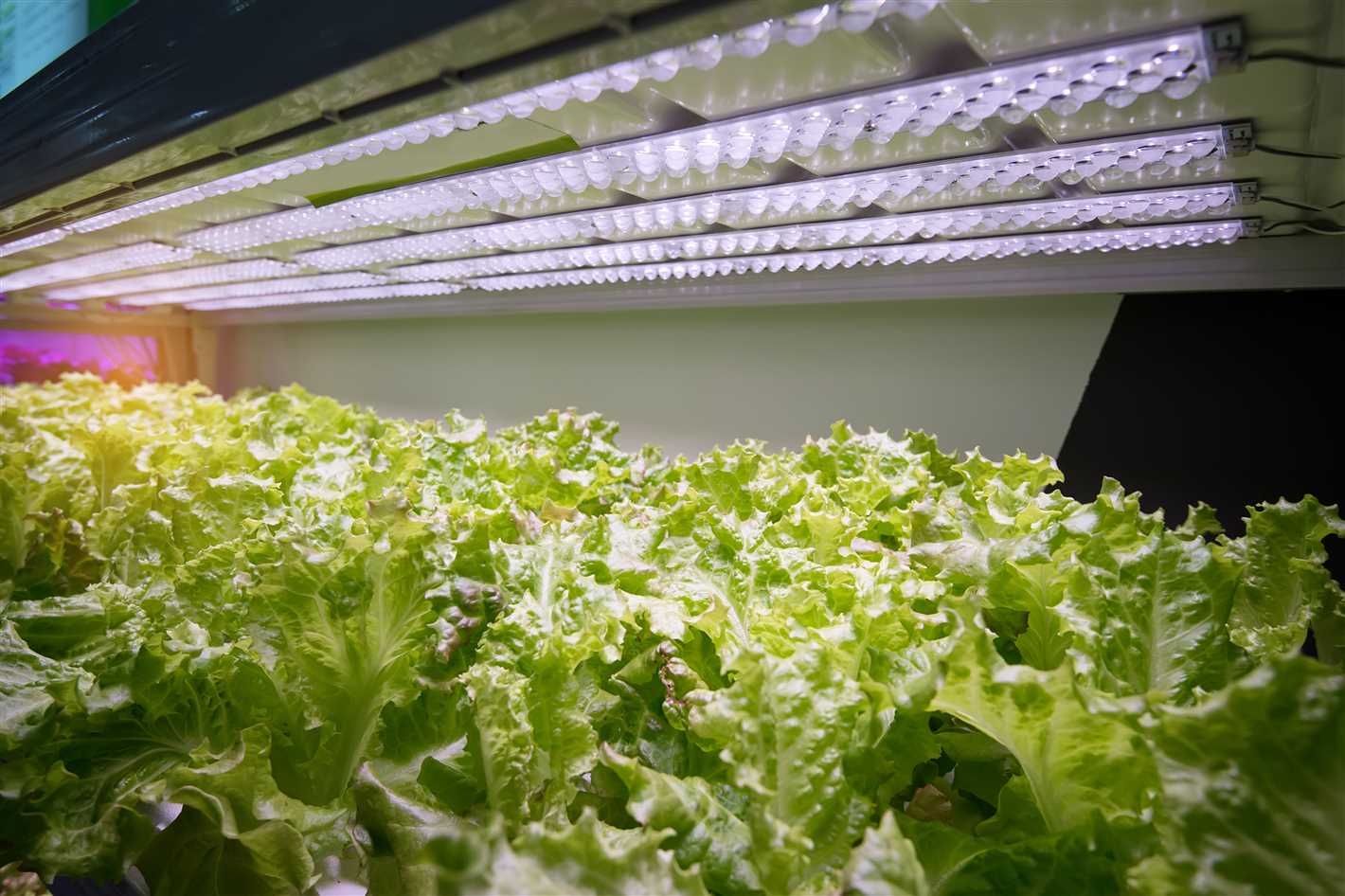
Fluorescent lamps can vary in light intensity. For seedlings, it’s generally recommended to use lamps with a light intensity of 2000 to 3000 lumens per square foot. This provides enough light for their early stages of growth without overheating or damaging the seedlings.
6. Reflective surfaces
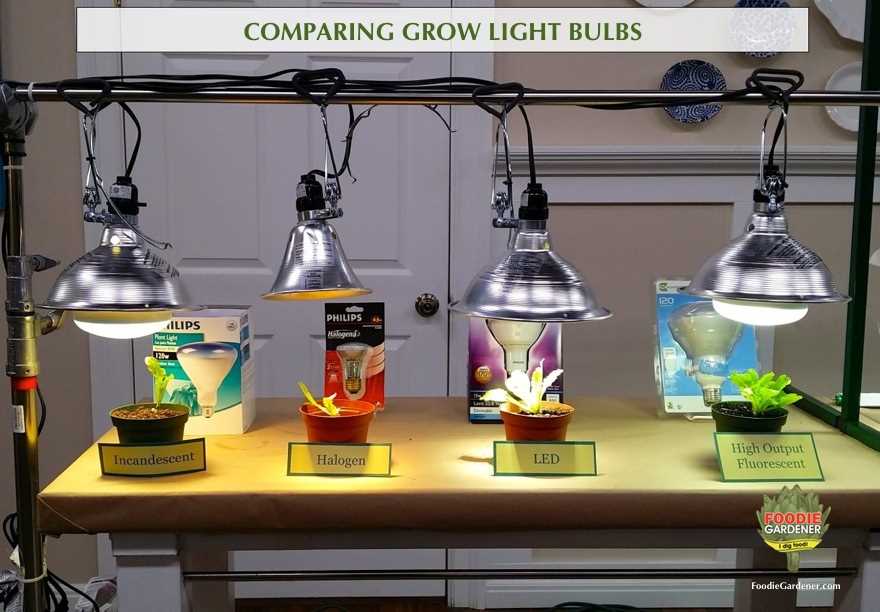
To maximize the efficiency of fluorescent lamps, consider using reflective surfaces around the seedlings. Reflective materials, such as aluminum foil or reflective film, can be placed on the walls or ceiling of the growing area to bounce the light back onto the seedlings, increasing overall light intensity.
By following these guidelines for the proper placement and setup of fluorescent lamps for seedlings, you can create a cost-effective and efficient lighting solution that promotes healthy growth and development.
Monitoring and Adjusting Lighting Conditions for Optimal Growth
Monitoring and adjusting lighting conditions is crucial for ensuring the optimal growth of seedlings. By providing the right amount and intensity of light, seedlings can develop healthy and strong. Here are some key factors to consider when monitoring and adjusting lighting conditions:
1. Light Intensity
Light intensity plays a significant role in seedling growth. It is important to measure the intensity of light reaching the seedlings. One way to monitor light intensity is by using a light meter. By placing the light meter at the same height as the seedlings, you can accurately measure the light intensity. Adjust the distance between the fluorescent lamps and the seedlings accordingly to achieve the desired light intensity.
2. Light Duration
Seedlings require a specific amount of light duration each day to grow optimally. Monitoring the length of time the fluorescent lamps are turned on is important. In general, seedlings need around 14-16 hours of light per day. As the seedlings grow, you may need to adjust the light duration. Keeping a consistent light schedule will ensure proper growth.
3. Light Spectrum
The light spectrum emitted by fluorescent lamps can affect seedling growth. It is important to choose the right type of fluorescent lamps that provide a balanced spectrum of light. Most fluorescent lamps have a balanced spectrum that includes both the blue and red wavelengths, which are crucial for photosynthesis. However, you may need to adjust the ratio of blue to red light depending on the specific needs of the seedlings.
4. Light Distribution
Even distribution of light is essential for uniform growth of seedlings. Uneven lighting can lead to leggy growth and weak seedlings. To ensure even light distribution, position the fluorescent lamps at the appropriate height and spacing. You can also use reflective materials or light diffusers to help distribute the light more evenly across the seedlings.
5. Regular Monitoring
Regular monitoring of lighting conditions is crucial to ensure that the seedlings are receiving the optimal amount of light. Check the light intensity, light duration, spectrum, and distribution regularly. Make adjustments as needed based on the growth and development of the seedlings. By closely monitoring the lighting conditions, you can provide the ideal environment for the seedlings to thrive.
Cost Savings and Sustainability with Fluorescent Lamps
When it comes to lighting solutions for seedlings, fluorescent lamps are not only cost-effective but also sustainable. They provide a significant cost savings compared to other types of lighting, making them a popular choice for both commercial growers and home gardeners.
1. Energy Efficiency
Fluorescent lamps are highly energy-efficient, meaning they convert a large percentage of the electricity they consume into usable light. Compared to traditional incandescent bulbs, they use up to 75% less energy, resulting in substantial energy savings. This efficiency can have a significant impact on utility bills, especially for those with large-scale operations.
2. Long Lifespan
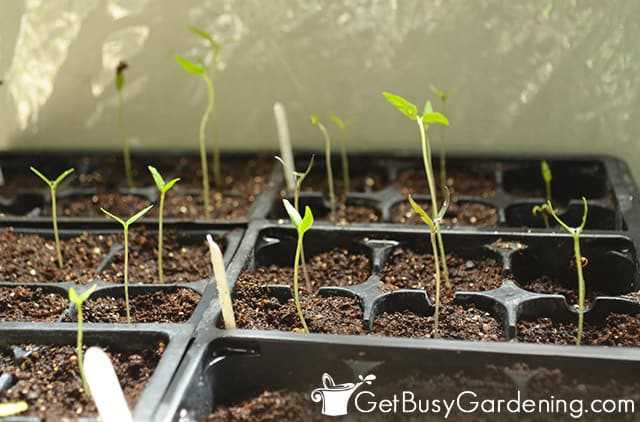
Fluorescent lamps have a much longer lifespan than traditional incandescent bulbs. On average, they can last up to 10 times longer, reducing the need for frequent replacements. This not only saves money on purchasing new bulbs but also reduces waste and the environmental impact associated with manufacturing and disposing of them.
3. Low Heat Output
Another advantage of fluorescent lamps is their low heat output. Unlike other types of lighting, they generate minimal heat when in use. This is particularly important for seedlings, as excessive heat can harm their growth. With fluorescent lamps, growers can provide the necessary light without risking the health of their plants.
4. Versatility
Fluorescent lamps come in various sizes and spectrums, allowing growers to choose the most suitable options for their seedlings’ needs. Whether it’s providing the right amount of light for germination or specific wavelengths for optimal growth, fluorescent lamps offer versatility in meeting different plant requirements.
5. Environmental Benefits
By opting for fluorescent lamps, growers contribute to a more sustainable future. These lamps contain less toxic materials compared to some other lighting options, reducing the potential harm to the environment. Additionally, their energy efficiency and long lifespan result in lower carbon emissions and less overall waste.
Conclusion
Fluorescent lamps are an excellent choice for cost-effective and sustainable lighting solutions for seedlings. Their energy efficiency, long lifespan, low heat output, versatility, and environmental benefits make them a popular option among growers. By harnessing the power of fluorescent lamps, growers can save money, reduce waste, and contribute to a greener future.
Tips for Maximizing the Efficiency of Fluorescent Lighting for Seedlings
When it comes to growing healthy seedlings, using fluorescent lighting can be a cost-effective solution. Here are some tips to help you maximize the efficiency of fluorescent lighting for your seedlings:
1. Choose the right type of fluorescent lamps
Not all fluorescent lamps are the same, so it’s important to choose the right type for your seedlings. Look for fluorescent lamps that provide a balanced spectrum of light, including both warm and cool colors. This will help ensure that your seedlings receive the full spectrum of light they need for healthy growth.
2. Position the lights correctly
Proper positioning of the fluorescent lights is crucial for maximizing their efficiency. Hang the lights approximately 2-4 inches above the top of your seedlings to provide them with adequate light intensity. Make sure to adjust the height of the lights as the seedlings grow to maintain the optimal distance.
3. Use a timer
To provide your seedlings with consistent light, use a timer to automatically turn the fluorescent lights on and off. This will ensure that your seedlings receive the right amount of light each day without the need for manual adjustments.
4. Provide sufficient light duration
Seedlings require between 12-16 hours of light per day to grow properly. Make sure to provide them with the appropriate duration of light to promote healthy and vigorous growth. Use the timer to set the desired light duration and adjust it as needed depending on the specific needs of your seedlings.
5. Maintain proper distance and coverage
Avoid overcrowding your seedlings and make sure that the fluorescent lights cover the entire growing area evenly. This will ensure that all seedlings receive an equal amount of light and prevent any shading or stunting of growth.
6. Keep the lights clean
Dust and dirt can accumulate on the surface of fluorescent lamps and reduce their efficiency. Regularly clean the lights to remove any debris and improve their performance. Simply wipe them gently with a soft cloth or use a mild cleaning solution if needed.
7. Consider using reflective surfaces
To enhance the efficiency of fluorescent lighting, consider using reflective surfaces or materials around the growing area. This will help redirect the light towards the seedlings and increase the overall light intensity, ensuring that they receive maximum benefit from the fluorescent lamps.
8. Monitor the temperature
Fluorescent lights can generate heat, so it’s important to monitor the temperature in the growing area. Make sure the temperature doesn’t exceed the optimal range for seedling growth. If needed, use ventilation or cooling systems to maintain a suitable temperature for your seedlings.
9. Rotate the seedlings
To promote even growth, regularly rotate the trays or pots containing your seedlings. This will ensure that all sides of the seedlings receive uniform light exposure, preventing them from growing towards the light source and becoming uneven or leggy.
10. Monitor growth and adjust lighting as needed
Regularly monitor the growth of your seedlings and adjust the lighting accordingly. If you notice any signs of stretching or weak growth, increase the light intensity or decrease the distance between the lights and the seedlings. On the other hand, if your seedlings are showing signs of stress or light burn, reduce the light intensity or increase the distance.
Following these tips will help you maximize the efficiency of fluorescent lighting for your seedlings, giving them the best possible start for healthy growth.
“Question-Answer”
What are fluorescent lamps?
Fluorescent lamps are a type of gas-discharge light source that uses electricity to excite mercury vapor, which then produces visible light.
Why are fluorescent lamps cost-effective for seedlings?
Fluorescent lamps are cost-effective for seedlings because they consume less energy compared to traditional incandescent lamps and they provide the right spectrum of light for optimal growth.
What type of fluorescent lamps are suitable for seedlings?
T8 or T5 fluorescent lamps are suitable for seedlings as they provide the right balance of light and heat, promoting healthy growth.
How far should fluorescent lamps be placed from seedlings?
Fluorescent lamps should be placed around 2 to 4 inches above seedlings to ensure they receive sufficient light without overheating.
Can fluorescent lamps be used as the sole light source for seedlings?
Yes, fluorescent lamps can be used as the sole light source for seedlings, especially when supplemented with proper light duration and intensity.
How long should fluorescent lamps be kept on for seedlings?
Fluorescent lamps should be kept on for about 12 to 16 hours a day to simulate the natural daylight cycle and promote healthy growth in seedlings.
Are there any drawbacks to using fluorescent lamps for seedlings?
One drawback of using fluorescent lamps for seedlings is that they have a limited light penetration depth, so they may not be suitable for large and densely packed seedling trays.







